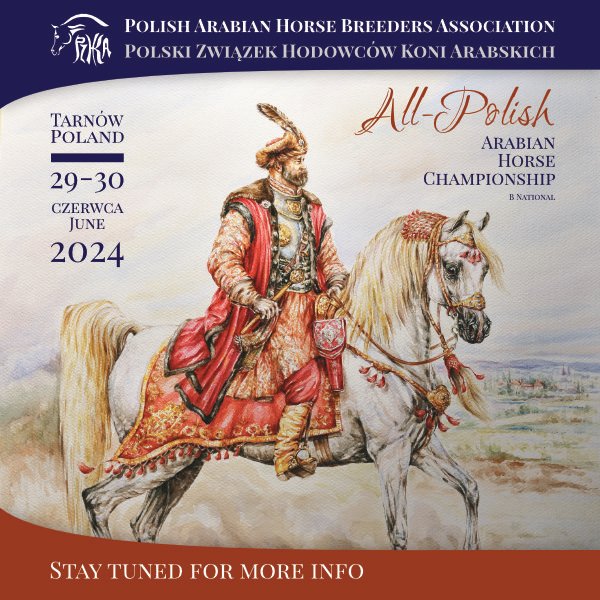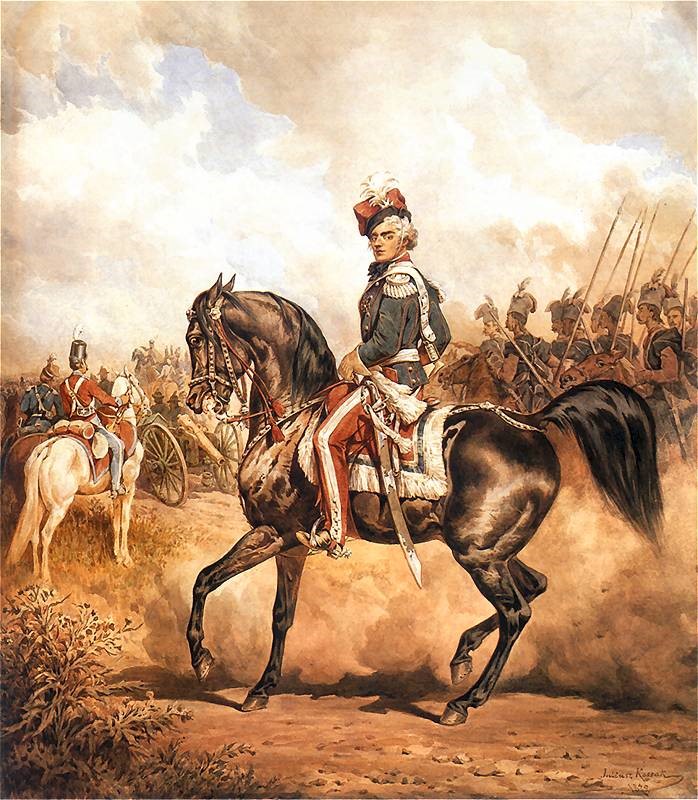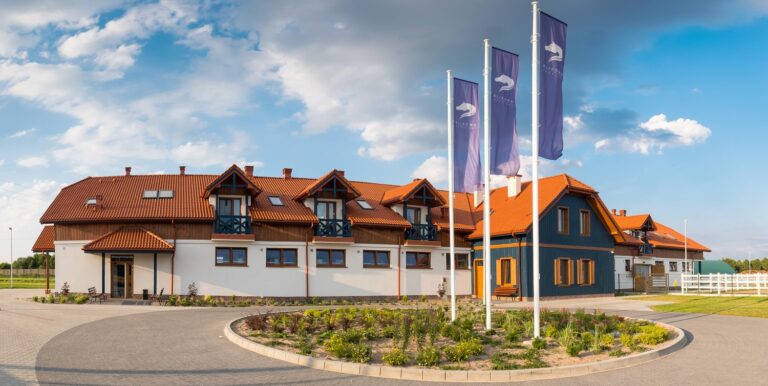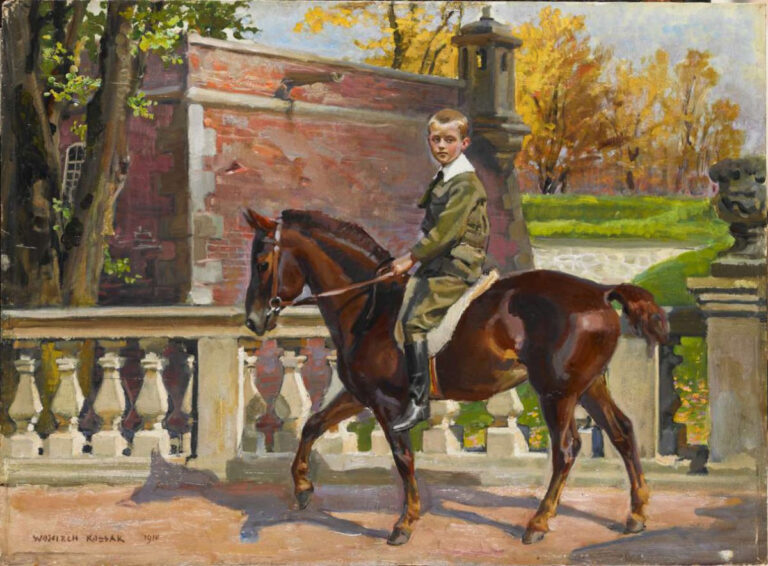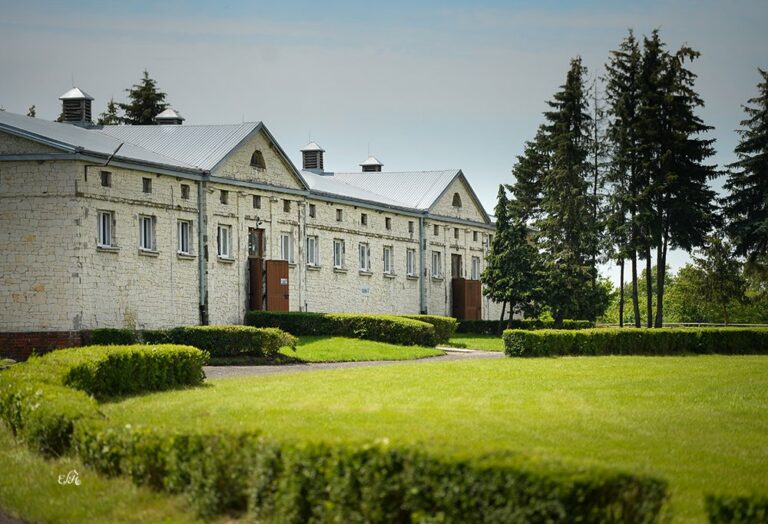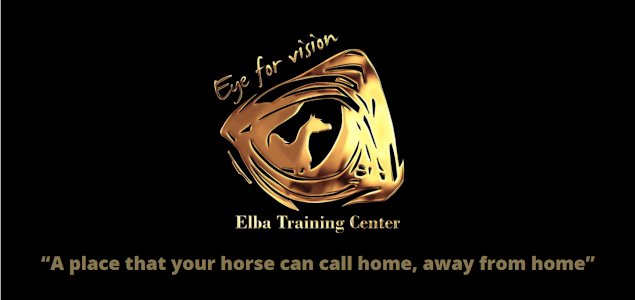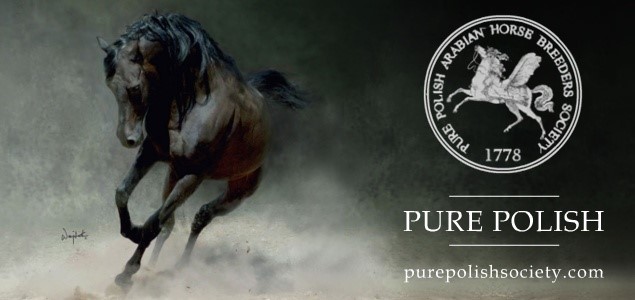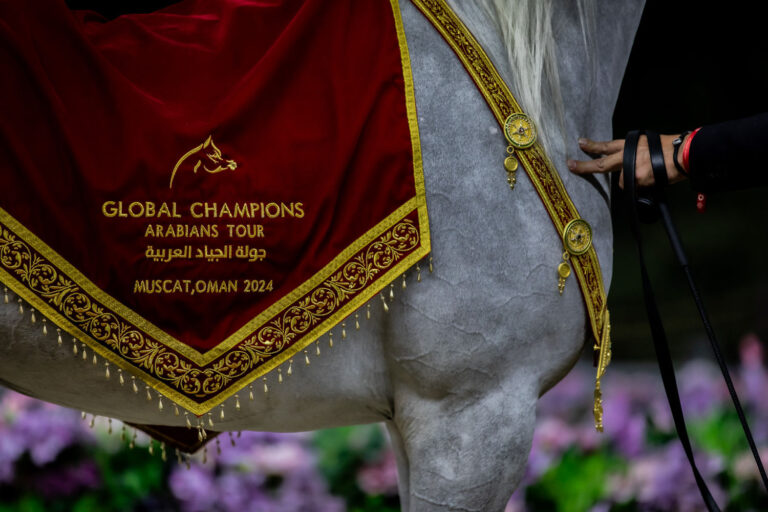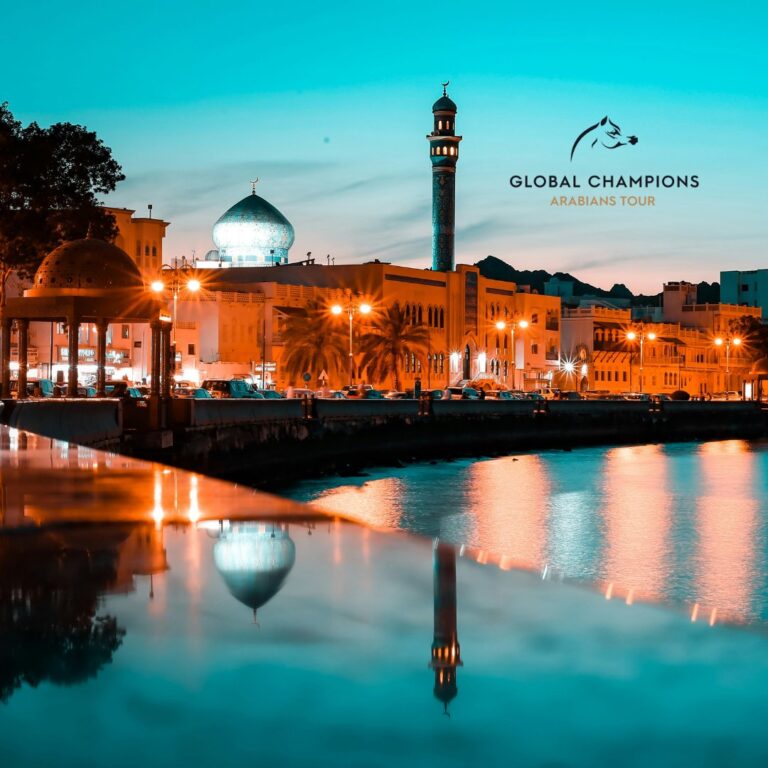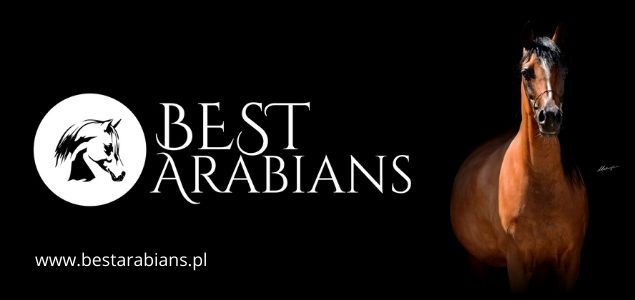“To tell the truth, Mr Count, in our country neither the eye has seen nor the ear has heard of such Arabian horses as I have now, all from the Desert itself.” *
It was with these words that Prince Eustachy Sanguszko described his desert acquisitions in a letter to Count Wacław Rzewuski dated January 1819. “(…) That they were from Desert, it is without a doubt and that was what made these horses superior at that time, when no one in Europe had yet thought about importing Arabian horses. Moszyński fulfilled his duty well (…) as Burski did earlier “*. The tradition of breeding Arabian horses in the Sanguszko family has been documented since the end of the 18th century. In fact, it was much older, as it was carefully cared for and continued, despite the numerous property divisions related to the inheritance of vast estates by successive generations of the Sanguszko family.
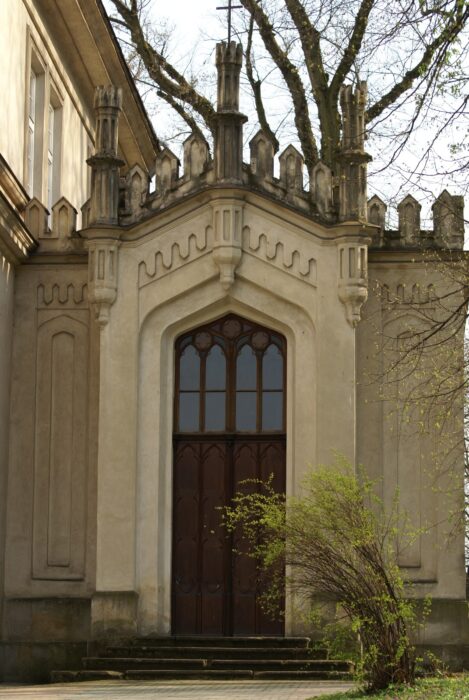
In Gumniska, which took their roots in Sławuta and which kept their own stud book from 1836, there were only 8 mares and 3 stallions left after World War I. The horses saved from the war in Gumniska did not satisfy Prince Roman Sanguszko. However, for the group of seven mares shown at the General National Exhibition in 1929, he received the highest award. In the 1930s, the 29-year-old prince Roman Władysław Sanguszko (1901–1984), in whom, largely under the influence of Bogdan Ziętarski, the ambitions of continuing family traditions in breeding Arabian horses were awakened, decided to raise the level of breeding horses in Gumniska. He organized an expedition to obtain breeding material in the Middle East. The decision to send an expedition to Arabia, as it turned out, was to be of epochal importance for Polish breeding. He entrusted the mission to an outstanding expert, endowed with extraordinary talent and intuition – Bogdan Ziętarski. It was not the first time that the Sanguszko family brought desert horses. Witold Pruski reports that during the years 1804-1917 73 stallions and 9 mares were imported to Sławuta from the East. Ziętarski’s trip was the last European expedition to obtain Arabian horses in the Nejd desert before the Second World War. The destruction caused by the war as well as the collapse of the colonial system on one hand, and then as a result of the increase in oil production in that region, inevitable industrialization of local communities, caused the collapse of Bedouin breeding, which disappeared with their world. In Poland, the world of borderland studs also ceased to exist with the end of the war. Today, both Arab and Polish breeders, with the growing awareness of what breeding is, have started to perceive it and protect it as their own cultural heritage.

Ziętarski wrote the following about his companion during the expedition, Carl Raswan: “(…) an excellent connoisseur of Arabian horses, who spent many years in Syria and Iraq. He had extensive relations with the Bedouin tribes and knew Arabic“* which was extremely important to the success of the entire expedition. At the request of the Hungarian Ministry of Agriculture, the expedition of Ziętarski and Raswan was to purchase an Arabian stallion for the State Stud in Babolna. Carl Raswan and Bogdan Ziętarski met in Babolna, which is located halfway from Budapest to Bratislava. It was from Babolna, on November 20, 1930, that they set off to the East. The expedition led through Constantinople – Alexandria – Cairo – Beirut – Tripoli-Damascus – Baghdad – Bahrain – Nejd. The return was planned through Baghdad – Damascus – Beirut – Istanbul – Constanta and then by train to Gumniska. **
The first stage led via Alexandria to Cairo, then via Tripoli, Homs, Hama and Damascus, to Baghdad. During this time the travellers saw hundreds of horses – even 1,250 in Egypt, but unfortunately did not find anything of value. Only the Saklavi herd of Prince Mohamed Ali in Egypt delighted Ziętarski so much that he wrote: “(…) I realized then that Juliusz Kossak did not exaggerate in his portraits of horses from the East and that such Arabian horses could once be purchased in Arabia, if even today I see them with my own eyes.” **
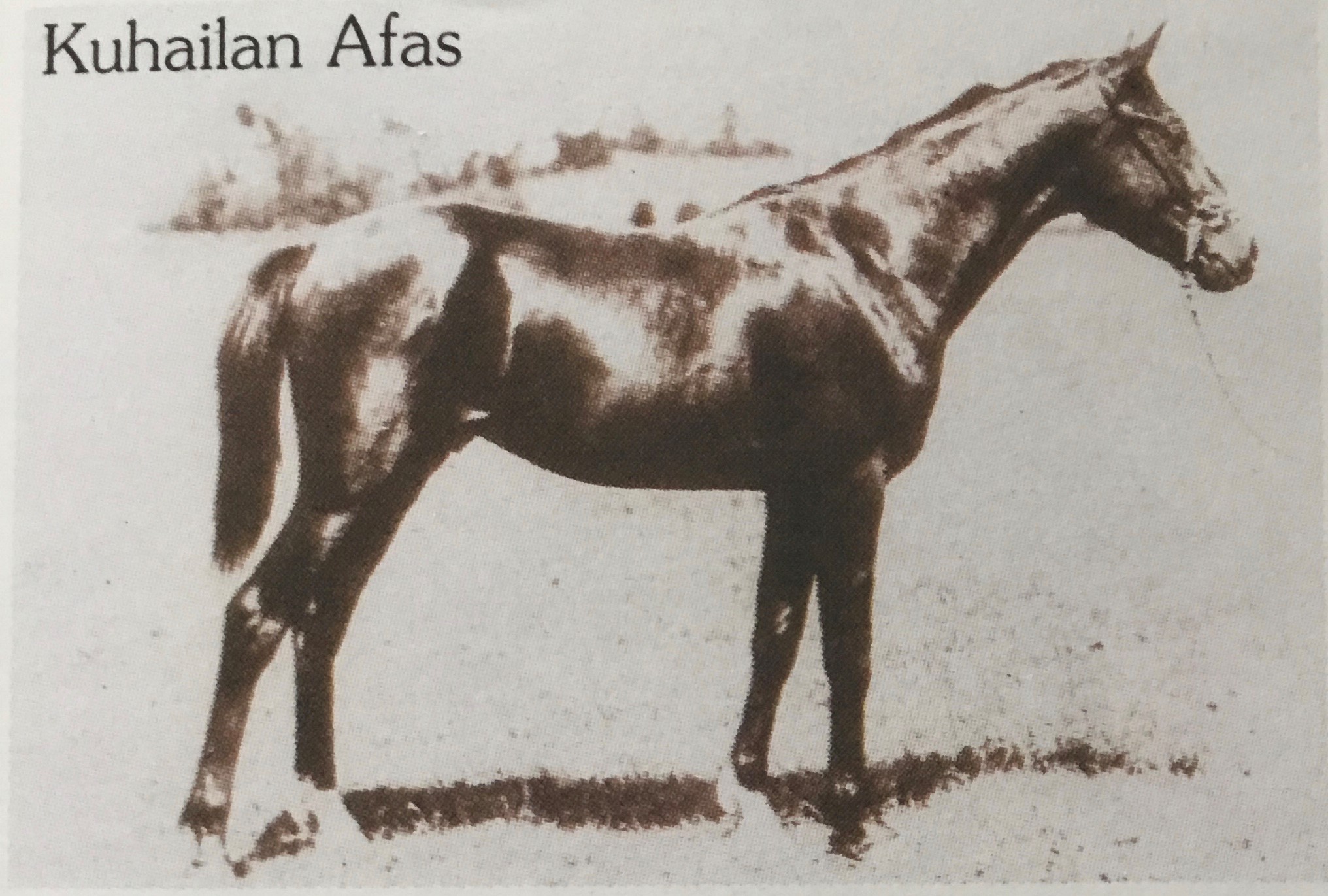
Bahrain was the next stage of the journey. Ziętarski and Raswan knew about the horses of the ruler of the island, Sheikh Hamad bin Isa Al Khalifa, that the herd was extremely valuable, that the horses were “asil” and “(…) kept in Kuhailan purity, maintained within several lines, and that jewels can be found in it but you have be wise to buy them well **.” When Ziętarski managed to get to Sheikh and see his stud, which was not easy at all, he finally saw the horses he was looking for and for which he had travelled thousands of kilometres. “Forty-three mares are beautiful and noble creatures. I am delighted by an 18-year-old dark bay mare by Kuhailan Krusch, out of the dam Kuhailat Afas. She is built like an ideal horse, deep, on low legs, long, well coupled, with magnificent withers, a noble rather long neck, and a dry head, eminently Arabian, with large eyes and thin-skinned muzzle, maybe a little soft pasterns. Her hind legs are impeccable, she is the most beautiful mare in the herd, the sheikh’s favourite.“** Fascinated by the beautiful Kuhailat Afas, Ziętarski made an attempt to buy her, but the Sheikh respectfully but firmly refused. Ziętarski knew earlier that the Sheikh never sells horses, but that he sometimes gives them as a gift to his loyal subjects. Following in this direction, the travellers went to the neighbouring island of Umman an Nasan to see the herd of the Sheikh’s brother and the stallion Kuhailan Wadhnan, whose offspring they had seen in Bahrain. Finally things moved on. Kuhailan Wadhnan is “ten years old, dark bay, on great legs, damaged by shackles and bad shoeing. The head is large, but it has all the features of noble origin. Well coupled, excellent set tail.“** After returning to Bahrain, Ziętarski learned that the Sheikh had recently gifted four Kuhailan Wadhnan foals to his secretary and thus found a yearling out of Kuhailat Afas, which he bought from the sheikh’s secretary after long negotiations. The dark bay son of Kuhailan Wadhnan and the mare Kuhailat Afas was, according to the Bedouin custom, named after his mother Kuhailan Afas.
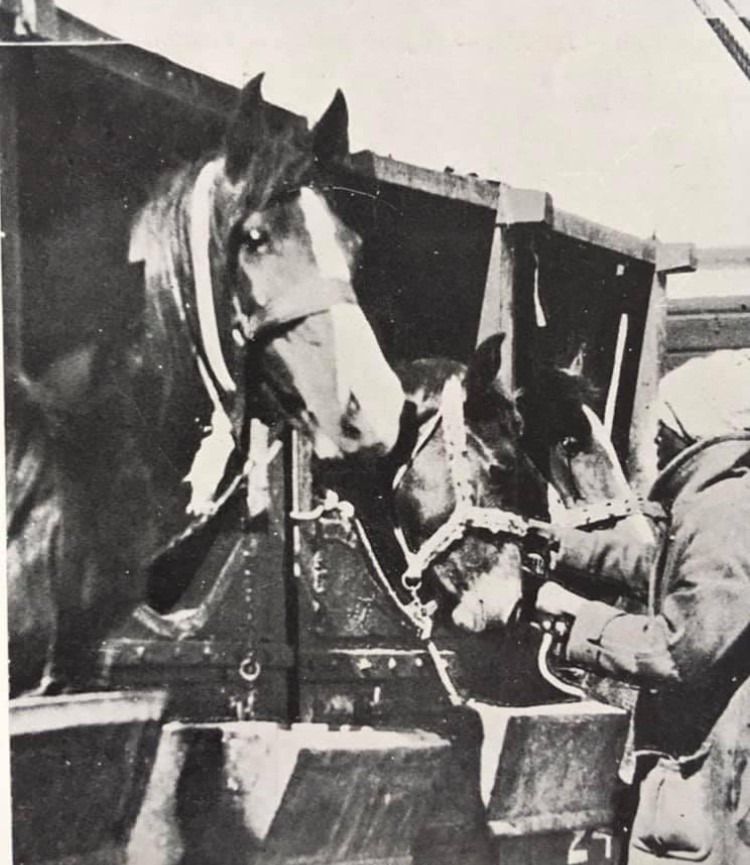
From Bahrain, the expedition went deep into the Arabian Peninsula, to the town of Jauf. The journey through the desert was very difficult, mainly due to the extreme heat during the day and frosty nights, the difference in temperature was difficult to bear. However, after a long journey, the expedition managed to reach the encampment of the Grand Rouallah Tribute. It was there that Ziętarski bought the stallion Kuhailan Haifi, considered to be the best desert Arabian ever imported to Poland! Ziętarski described the circumstances of this unusual transaction as follows: “(…) I finally hear a neigh, the stallions are being led, I shudder, is it really good, or again a disappointment and a futile waste of time (…). They lead the bay (…). My legs buckled under me, and this is the horse I am looking for, small, dry, with perfect legs, not a sign of a cow’s leg posture. Long neck, noble head, though not too small, nostrils distended, excellent setting of the tail. For the first time in my life, when buying a horse, I had the feeling that I was fainting. Meanwhile, a lot of thoughts were going through my head. Will he be willing to sell. Will it be possible to deliver the horse 800 km to Damascus if sold (…)? I make my way to approach the bay stallion once more, which I manage to do only before noon. However, the first impression was accurate. The horse is completely good. Late at night the stallion was bought and its delivery discussed. We spend the night and after paying the price at dawn, we leave.“**
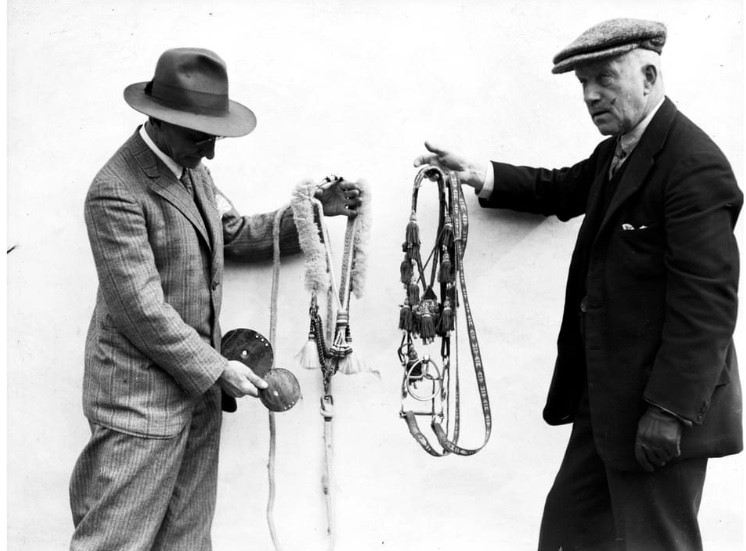
Another stallion purchased by Ziętarski on his way back to Damascus was Kuhailan Zaid for Babolna and the yearling Kuhailan Ajouz, found among the Would’ali Bedouins, who later gave the stallion Wezyr 1936***, sold to Babolna.
The expedition lasting more than half a year, despite the ever-increasing difficulties and worries, undoubtedly brought wonderful results. Apart from the most valuable in this group bay Kuhailan Haifi d.b. 1923 (abbreviation of “desert-bred”) and the dark bay Kuhailan Afas d.b. 1930, the chestnut Kuhailan Ajouz d.b. 1930 and the mare Szeikha, Ziętarski and Raswan brought the stallion Kuhailan Kruszan d.b. to Gumniska. 1927 (chestnut) and three chestnut mares: Hadba Inzihi d.b. 1930, Rabda Khuszaiba d.b. 1927 and Hamdani Semrie d.b. 1930; and additionally the bay stallion Kuhailan Zaid d.b. (1923 or 1925) to Babolna. This is what Ziętarski wrote on April 1, 1931 in a letter to Roman Sanguszko: “In my life I would not like to do something similar to this. One thought that sustains me is that now Gumniska will be the best herd in the world.“**
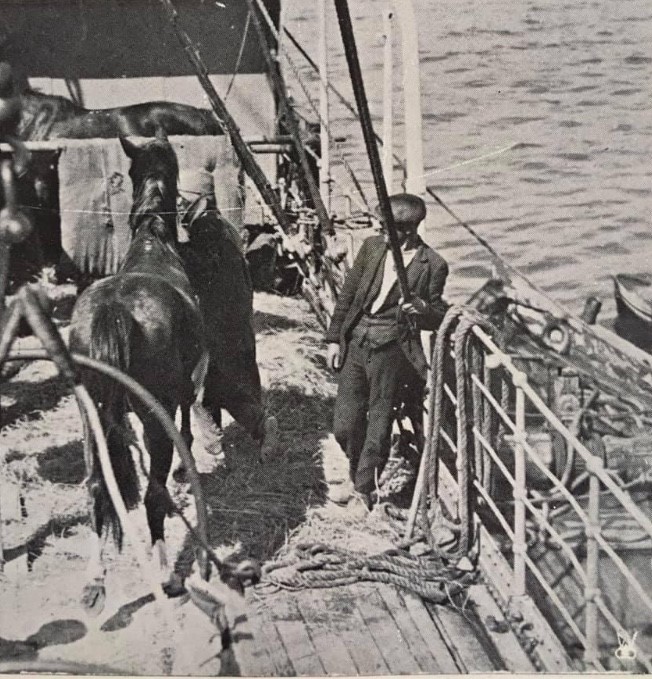
From Ziętarski’s memoirs and maps drawn during the journey, which he sent to Roman Sanguszko on a regular basis, it appears that the travelers traveled about 12,000 km, struggling with malaria, hunger, car breakdowns, financial problems and the weather. In April, Ziętarski was relieved to leave the Middle East. In a letter of April 30, 1931, from the deck of the Lloyd Triestino company’s “Abazia”, departing from Istanbul to Constanta, Ziętarski wrote to Prince Sanguszko: “(…) I say goodbye to the East from the deck, with a strong determination not to return this way again.“****
According to Ziętarski’s memoirs, he arrived in Gumniska on May 12. In private letters, he complained that no one was waiting for him. He also had huge problems with the reimbursement of costs incurred for transporting horses to Gumniska.
The result of this exhausting journey, great hardships and many costs, was the purchase of three mares and five stallions, of which Kuhailan Afas and Kuhailan Haifi, purchased for Gumniska, and Kuhailan Zaid to Babolna, played a fundamental role in Polish and world breeding in the last ninety years. This last, before the Second World War, import of original Arabians from the desert “(…) despite the fact that the last war did not allow to witness the full results, because the material, apart from a small number of youngsters, was lost, the value of the original blood, which has stayed in the pedigrees of our horses by means of imported stallions, has rendered invaluable services for our purebred breeding” (Z. Rozwadowski). Indeed, thanks to only a few stallions that survived the war cataclysms, Polish and world breeding gained priceless sire lines, which are continued to this day. Some of the horses imported by Bogdan Ziętarski’s expedition were seen by the then Director of Horse Breeding of the Ministry of Agriculture, Jan Grabowski. This is how he described them “(…) then comes out a metallic chestnut, an import from Arabia – Kuhailan Kruszan. Kruszan is smaller and much lighter than Nedjari, but has something that is hard to put in words, something that grabs you at first sight. Every feature shows refinement, as if an extract of nobility, showing breeding from a period of over 1,400 years with the religious fanaticism of the Prophet’s cultivated commandments behind it… Brought to us in trot, he looks at us with an eye of a gazelle and under his skin there is a network of veins vibrating with nerve and strength (…)“. Kuhailan Haifi was “(…) a horse completely different from its predecessors (Nedjari and Kuhailan Kruszan), a distinct brown colour, small, but what a conformation – deep, on a beautiful dry leg and perfectly short tibia. A topline so good that it couldn’t be better, an arched neck and a head so beautiful that could serve as a model for Kossak himself. The forehead is wide, the eye is large, expressive, delicate nostrils, jaws set wide apart and precisely defined. He stands restless, until he trembles with the will to move, and when trotted, he moves wonderfully. But he is not fond of this movement, and by digging with his foot, he shows the desire to discharge his energy. (…) At my request – let loose in a spacious manege – he flows like a swan with strange majesty and ease, elastic, agile, bursting with life and strength. As I gaze at this horse, I gradually realize that the Arabian from the continent – as a product of culture – is different and must be different. Kuhailan Haifi makes such a strong impression that it is difficult to tear yourself away from him, so I must say here that despite the various stories I have read about Arabian imports, I never thought that such a stallion could be found in the Arabian steppes and acquired (…) Summing up the general impressions made by the imports, it must first of all be emphasized that they are serious, somewhat melancholic horses, not reminiscent of the moving, throbbing cockerels. They carry their tails beautifully and far apart, never lifting them up high, the hair of the mane and tail quite lush, but the hair is silky. A common feature of all imports is extreme dryness. Under the thin skin, muscles as clear as if they were chiselled. Looking at these horses, my thoughts went over a whole significant chain of factors that made it possible to obtain them and bring them to Poland. From the desert – to Gumniska!”*****
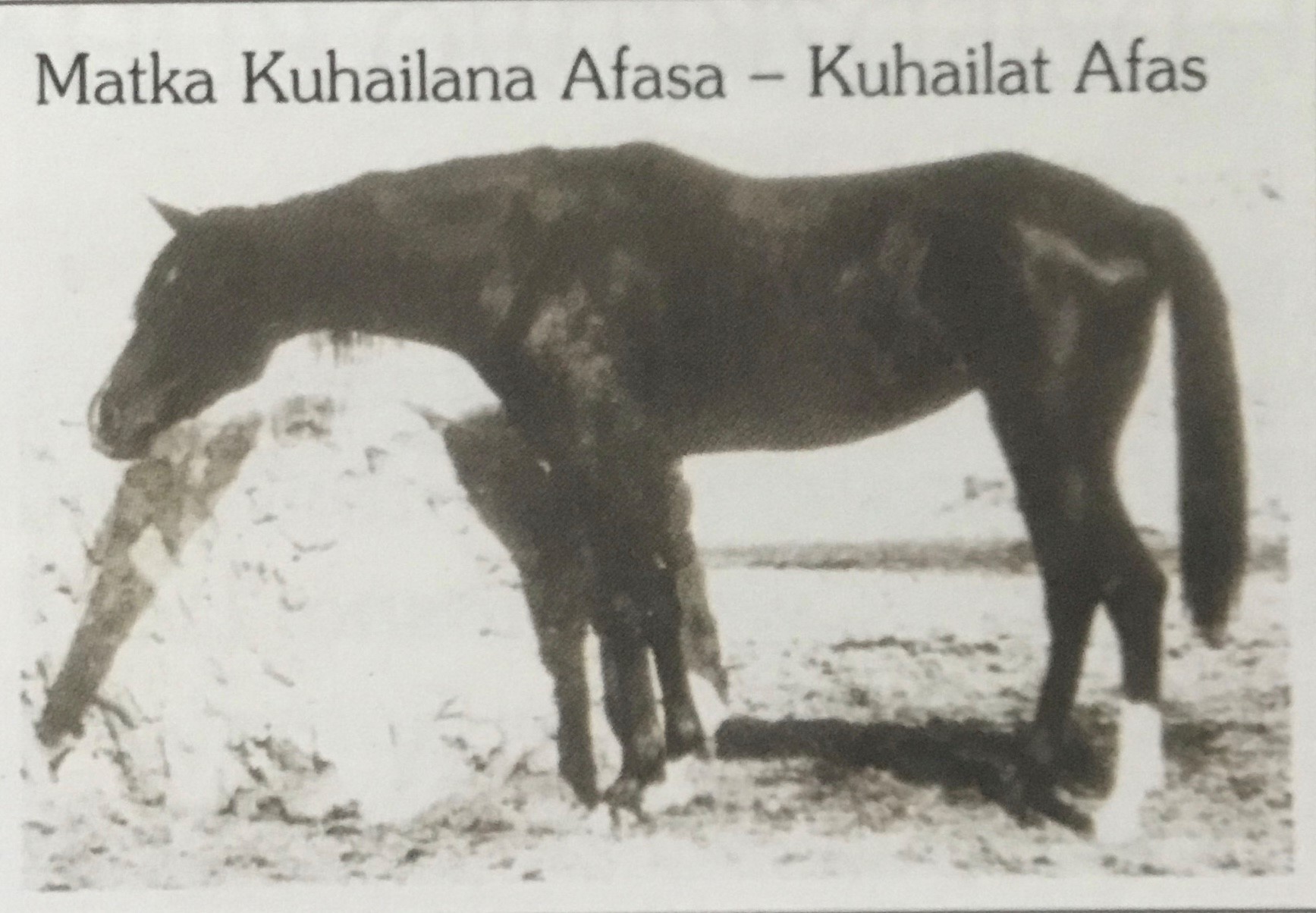
Bogdan Ziętarski realized how difficult it would be to find good horses in the future. The world of nomadic Bedouins ended with the inevitable industrialization of the Middle East. This is how he summarized his journey in a book describing the expedition entitled “In the Tents of the Bedouins”: “Today, when I think about what I saw in the Arabian steppes, I can confidently say that my firm belief is that a Bedouin horse in terms of health, endurance and structure ( depth, short legs and ribs) is superior to all other breeds in the world. Unfortunately, I left under the impression that this breeding is ending abruptly (…) Bedouins are settling down, and for a sedentary way of life the camel, sheep and donkey are of much greater practical value than a purebred horse. They already cover a relatively small number of mares, and if 80-90% of foals born in the first year die, it is easy to understand that soon in the Arabian steppes a horse will be more rare than a car.”**

However, Ziętarski hoped that the best type of Arabian horse would be preserved thanks to imports, proper breeding “in pure lines” and by racing selection: “In the near future, perhaps Arabian breeders will have to look for horses that I was looking for not in the East, but in Poland.“**** These words of Bogdan Ziętarski turned out to be prophetic. Over the next 90 years, it was Poland that became the second homeland of the Kuhailans.
* Roman Sanguszko, Stadnina Książąt Sanguszków, 1933, source: PCBJ
** Bogdan Ziętarski; Pod namiotami Beduinów (Under the Tents of Bedouins).
*** Izabella Pawelec-Zawadzka, Roman Pankiewicz, Konie z wysp koralowych, Koń Polski 8/98 dodatek specjalny Araby w Polsce.
****Monika Luft, Camels’ milk for the stallion, armored vests for the Bedouins, polskiearaby.com 2011.
*****Jan Grabowski, Hodowca i Jeździec 8/1933 (quotes: Roman Pankiewicz Kurier Arabski 19/20/1998).
Roman Sanguszko got to France via Hungary in 1939, and after a period of wandering, he settled in Sao Paulo, Brazil. In 1945 the stud in Gumniska came to an end, which was run by Bogdan Ziętarski during the occupation until 1944. The horses were lost during the evacuation near Nowy Tomyśl; they most likely fell into the hands of the Soviet army. Some of the youngsters were left in Racot. Among the youngsters who survived in Racot was the granddaughter of Kuhailan Zaid d.b., born in 1943, Forta, who established an extremely valuable line in post-war breeding, thus continuing the Słąwuta dam line of Ukrainka 1815. In 2019 the filly Florissima, a direct descendant of Forta, became Polish National Champion Mare.
Roman Sanguszko never visited Poland again, but at the end of the 1970s he handed over, through the Polish consulate in Brazil, microfilms with photos of the saved Sławuta stud book as a gift for Polish breeding. Unfortunately, they are not available at the moment, as they were privatized together with the archive of Izabella Pawelec-Zawadzka.
After the war, Bogdan Ziętarski worked as the manager of a foal house of draught horses in the Milicz State Farm. Probably the fact that his vast experience and knowledge were never used in the new system was due to his previous work with Prince Sanguszko. As Pankiewicz recalls, Ziętarski lived in extremely primitive conditions. He had a small room with an outhouse at his disposal, and he had to go to the barn for water. His merits were forgotten. There is a relay about how large amounts of books and documents were burned in the yard after his death. Perhaps these were the remains of breeding archives. “History lifts some people up, while others are covered with ashes,” Pankiewicz said sadly. “He was covered with ashes, and he was an outstanding man.”***


